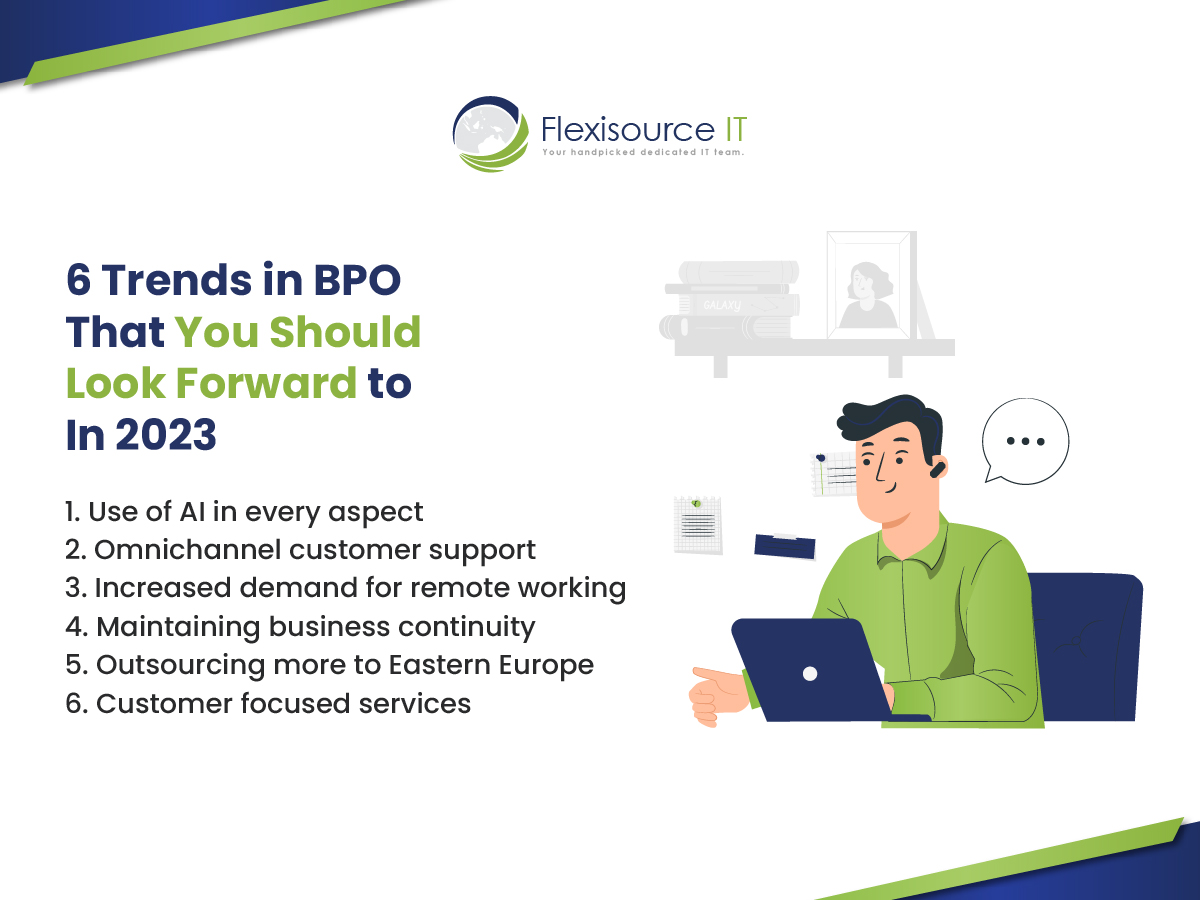Business Process Outsourcing (BPO) is probably one of the most popular and fastest-growing industries worldwide. In fact, according to Statista, approximately 57% of companies globally will use BPO to concentrate on core issues and activities in 2021. As a result, this industry has continually evolved with different trends emerging.
Likewise, as entrepreneurs, we are responsible for keeping abreast with new technology, changing trends, or global inclinations that may affect our business. One is various resources or suppliers to your business’ resources and people – in this case, outsourcing.
This article will tackle various BPO trends in the industry that you should expect and utilise in 2023.
What is the future of the BPO industry?
The BPO industry is one of the fastest-growing sectors in the world. It has been steadily increasing in size and scope over the past few years. And it is expected to continue to do so in the future.
And with technological advancements, the BPO industry has become more efficient and cost-effective, allowing companies to outsource their business processes to countries with lower labor costs. This has enabled organizations to focus on core competencies while keeping costs low.
As more organizations outsource their processes, it is clear that the future of the BPO industry will be bright.
6 Trends in BPO That You Should Look Forward to In 2023
As mentioned earlier, outsourcing is a very dynamic industry. It’s unstoppable and is continuously growing as more businesses patronise it. Over the years, we saw the BPO industry grow with new policies, technology, and inclination. Likewise, here are 10 BPO trends that you should look forward to in 2023!

1. Use of AI everywhere
Like in other industries, Artificial Intelligence (AI) plays a vital role in the BPO trends. Today, AI technology in BPO is used to automate mundane tasks, streamline processes, and improve customer experience. It is used in various ways, from automating customer service inquiries to optimizing supply chains and managing complex projects.
According to Business Wire, the Global Market of AI in the BPO industry reached an estimated US$ 1.1 Billion in 2020. This trend is expected to grow further by 2023.
As a result, AI has enabled businesses to reduce costs and increase efficiency while providing better customer service. By leveraging AI-based solutions, companies can free up their resources for more important tasks and focus on their core competencies.
Moreover, with AI-driven outsourcing, businesses can take advantage of the latest technologies without investing in expensive infrastructure or hiring additional staff.
2. Omnichannel customer support
One of the most significant BPO trends existing is Omnichannel customer service. It is a modern approach to providing excellent customer service by creating a unified experience for customers across multiple channels without having to repeat themselves on their issues. Omnichannel customer support also allows businesses to provide more personalized service as they can track customer interactions across all channels and provide timely responses.
With the rise of omnichannel customer services, outsourcing has become a viable option for companies looking to streamline their operations and increase efficiency. Moreover, it helps businesses build better customer relationships and increase loyalty.
By outsourcing certain services, companies can focus on core competencies while having access to specialized expertise. Likewise, Omnichannel services allow the outsourcing of various tasks, including customer service, marketing, sales, and more.
With omnichannel services in outsourcing, businesses have the opportunity to create a competitive edge while saving time and money.
3. Increased demand for remote working
During the COVID-19 Pandemic, remote working was streamlined and popularised more than ever. This trend intensified as numerous BPO companies switched to remote working with the government and pushed quarantine restrictions, social distancing, etc.
And despite removing quarantine restrictions, this trend is not slowing down. Today, businesses and employees prefer to work remotely or from home. According to research conducted by a better team, 62% of their respondent BPO employees expect their companies and future employers to allow remote work even after the pandemic.
This is probably due to the profits remote working provides, including reduced costs, increased productivity, and employees’ better work-life balance. It offers greater flexibility when it comes to managing their time and workloads. In addition, remote working has enabled them to work from any location at any time without compromising on the quality of service or productivity levels.
Likewise, with remote working, BPO companies can offer their services to customers worldwide. It helps organizations save on office space costs and reduce overhead expenses associated with running an office. Moreover, remote working also allows companies to access a larger talent pool and hire people worldwide.
4. Maintaining business continuity
Business continuity is a process that helps organizations prepare for and respond to unexpected events that could disrupt their operations. It involves creating plans, strategies, and procedures to ensure the business can quickly resume normal operations in an emergency. This includes contingency plans to manage risks associated with natural disasters, cyber-attacks, or other disruptions.
While BCP was established in some, due to the pandemic, it became more widespread across all industries, including BPO. The pandemic has opened the eyes of companies to include operational preparedness and their weaknesses in BCP.
5. Outsourcing more to Eastern Europe
Recently, outsourcing in Eastern Europe is becoming increasingly popular due to its various benefits, such as cost-effective solutions and access to skilled professionals. In fact, the region is home to over 3,500 software development companies and more than 1.3 million developers.
Thus, many businesses are taking advantage of these BPO trends by leveraging the region’s competitiveness. This has opened up new business opportunities, as they can now access a wide range of services from remote locations.
In addition, Eastern Europe offers a unique cultural perspective that can benefit companies looking to expand their operations into new markets. As such, outsourcing in the region is becoming a progressively attractive option for businesses looking to maximize their potential growth.
6. Customer-focused services
Today, business is all about good customer service and personalised customer experiences. It is the foundation of customer loyalty and trust and can make or break a company’s reputation. In fact, according to a study steered by Oberlo, about 81% of consumers say that a positive customer experience increases their chances of making a purchase.
Thus, Customer focused services outsourcing allows companies to provide better customer service while reducing operational costs. It also lets them focus on developing new products and services while providing the best customer experience.
Follow these BPO Trends Today!
As outsourcing enthusiasts, we have witnessed these industry-changing trends, markets, and people. Thus, if you plan to keep using or trying outsourcing, you need to familiarise yourself with the industry’s past, current, and future trends.
These six trends are just a few among those who play a crucial part in the BPO industry. Still, we hope this article can help you in your BPO journey. And if you need further help, you can contact Flexisource IT! Contact us today!





